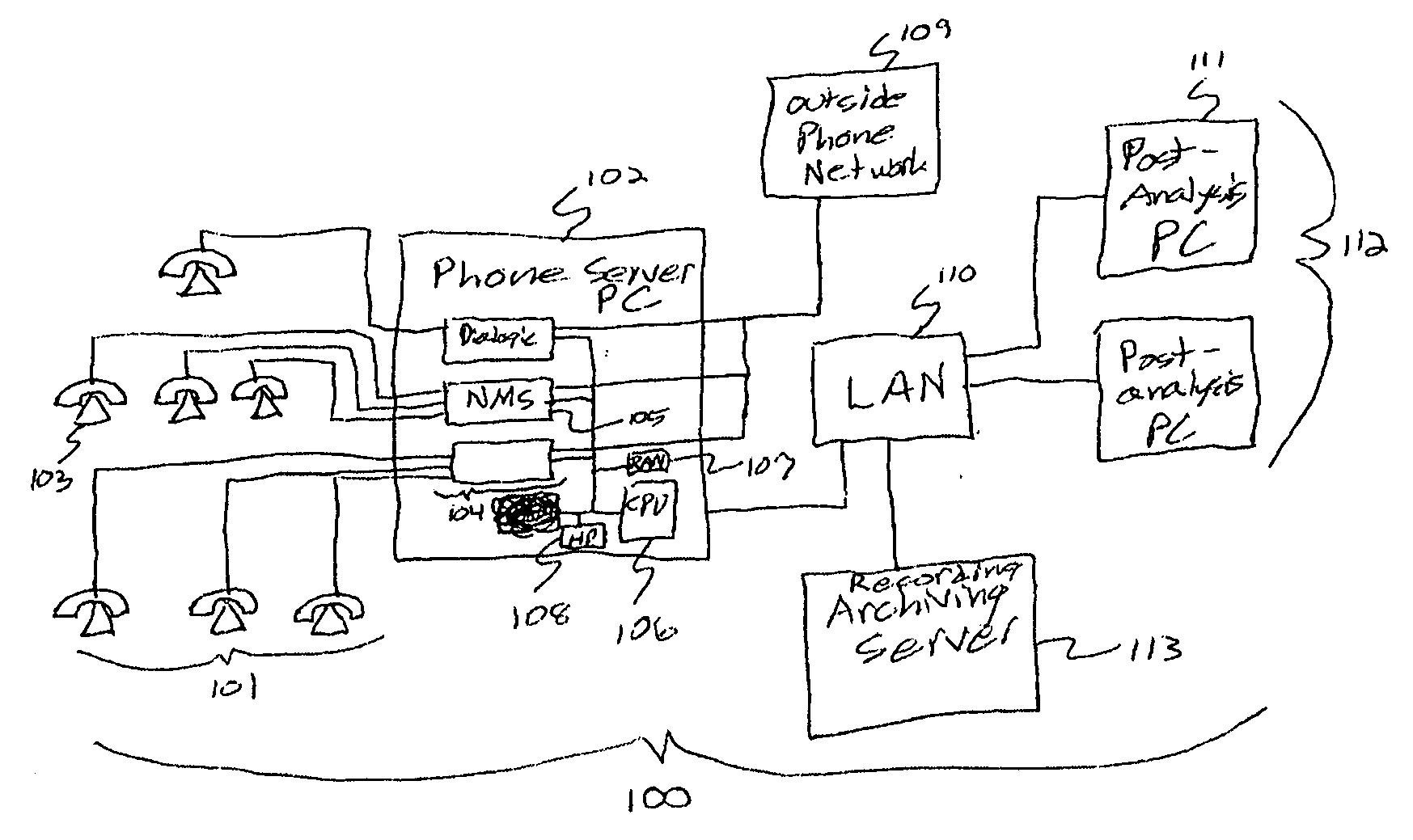Multi-party conversation analyzer & logger
a multi-party conversation analyzer and logger technology, applied in the field of prison phone systems, can solve the problems of system failure to detect clicks, inability to detect clicks, and inability to reliably detect detectors, so as to facilitate interruption of such calls, improve customer service, and high degree of accuracy in pinpointing
- Summary
- Abstract
- Description
- Claims
- Application Information
AI Technical Summary
Benefits of technology
Problems solved by technology
Method used
Image
Examples
Embodiment Construction
[0094]FIG. 1 is a block diagram of the hardware of a preferred embodiment of the present invention, as might be used within a prison phone system. In this embodiment, phone server 102 is implemented as a server PC with one or more phone cards 104 such as may be purchased from Natural Microsystems, Dialogic, Brooktrout Technologies, or Pika Technologies. In a preferred embodiment, much of the low-level computation done to extract voice parameters, etc. is done on DSP (digital signal processing) chips on board phone cards 104. Further processing and the creation of call summaries and call database entries is done by CPU 106. Both phone cards 104 and CPU 106 have direct access to RAM (random access memory) 107 and hard disk 108.
[0095]FIG. 7 shows the time-domain waveform from a 100-second three way conversation, recorded from the phone of the person initiating the call. We will refer to three conversing parties in discussing this call: the calling party, the called party, and the thir...
PUM
 Login to View More
Login to View More Abstract
Description
Claims
Application Information
 Login to View More
Login to View More - R&D
- Intellectual Property
- Life Sciences
- Materials
- Tech Scout
- Unparalleled Data Quality
- Higher Quality Content
- 60% Fewer Hallucinations
Browse by: Latest US Patents, China's latest patents, Technical Efficacy Thesaurus, Application Domain, Technology Topic, Popular Technical Reports.
© 2025 PatSnap. All rights reserved.Legal|Privacy policy|Modern Slavery Act Transparency Statement|Sitemap|About US| Contact US: help@patsnap.com



